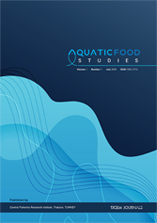Horticultural Studies (HortiS)
2021, Vol 38, Num, 1 (Pages: 50-55)
The Effect of Antioxidants on Micropropagation of Avocado by Nodal Segments
2 Akdeniz University Faculty of Agriculture Department of Horticulture, 07070, Antalya/Turkey DOI : 10.16882/HortiS.900936 Viewed : 2795 - Downloaded : 1467 Tissue culturing, which is an alternative method to clonal reproduction of avocado (Persea americana Mill.) has started to become widespread in recent years. However, the browning of tissue which is caused by oxidation of phenolic compounds is one of the most important factors limiting success for the in vitro reproduction. Therefore, in this study, the effects of different antioxidants (activated charcoal (AC), ascorbic acid (ASA), citric acid (CA) alone or in combination with each other on browning and regeneration of avocado shoots, grown under in vitro conditions, were investigated. In the study, MS (Murashige and Skoog) nutrient medium with 1 mg L-1 BAP, 0.1 mg L-1 GA3 and 3% sucrose was used in all treatments. Moreover, antioxidants alone or combined with each other with different concentrations were used in the nutrient media in all treatments except the control. As a result of the research, the lowest browning intensity and the highest survival rate values were shown in the application of 100 mg L-1 ascorbic acid (ASA) alone and in the combination of 60 mg L-1 ascorbic acid (ASA) and 40 mg L-1 citric acid (CA). Furthermore, maximum shoot length (2.8 cm) and maximum leaf number (6.4) in terms of survival rate of the explants, shoot length and number of leaves were determined in MS nutrient medium containing a combination of 60 mg L-1 ascorbic acid (ASA) and 40 mg L-1 citric acid (CA). Keywords : Ascorbic acid, Citric acid, Browning, In vitro, Persea americana Mill.














